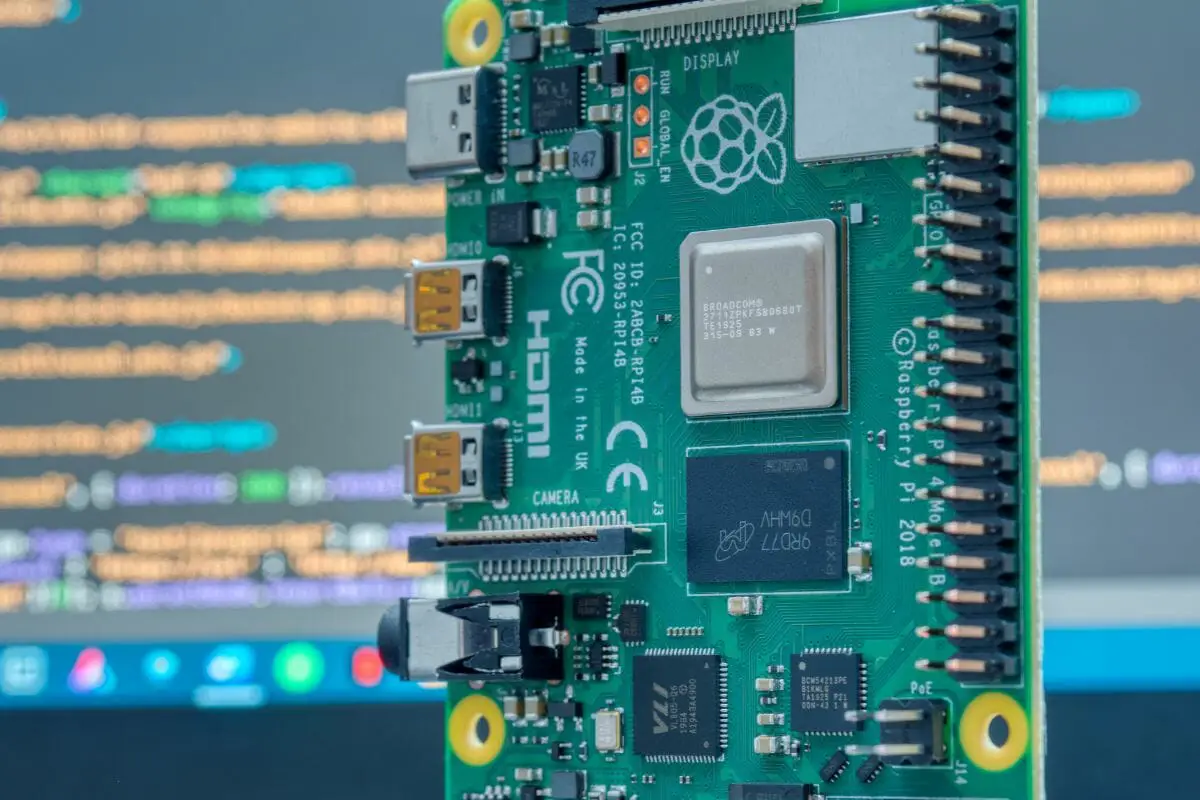Setting up Raspberry Pi firewall rules is essential for securing your network and protecting your data from unauthorized access. As more people use Raspberry Pi devices for various applications, understanding how to configure firewall rules becomes increasingly important. By learning the basics and advanced configurations, you can ensure your network remains safe and secure.
Raspberry Pi has become a popular choice for hobbyists, developers, and even enterprise users due to its affordability and flexibility. However, with great flexibility comes the responsibility to secure your device properly. Configuring Raspberry Pi firewall rules is one of the most effective ways to safeguard your system from potential threats.
This comprehensive guide will walk you through everything you need to know about Raspberry Pi firewall rules. From setting up basic configurations to advanced strategies, we’ll cover all aspects to help you secure your network effectively. Let’s dive in!
Read also:Captain Lee The Legendary Yachting Icon Behind Below Deck
Table of Contents
- Introduction to Raspberry Pi Firewall
- Why Raspberry Pi Firewall Rules Are Important
- Basic Raspberry Pi Firewall Configuration
- Advanced Raspberry Pi Firewall Configuration
- Common Raspberry Pi Firewall Rules Examples
- Troubleshooting Raspberry Pi Firewall Issues
- Best Practices for Raspberry Pi Firewall Security
- Using iptables for Raspberry Pi Firewall Rules
- Integrating Raspberry Pi Firewall with Other Security Tools
- Conclusion and Next Steps
Introduction to Raspberry Pi Firewall
A Raspberry Pi firewall is a critical component of your network's security infrastructure. It acts as a gatekeeper, controlling incoming and outgoing traffic based on predefined rules. By setting up Raspberry Pi firewall rules, you can block unauthorized access, filter malicious traffic, and ensure your device remains secure.
Raspberry Pi, with its lightweight and versatile design, is often used in projects that require internet connectivity. Whether you're running a home automation system, a web server, or a media center, securing your Raspberry Pi is crucial. Firewall rules play a vital role in achieving this.
Understanding the Basics of Firewall
A firewall monitors and controls network traffic based on specific security rules. In the context of Raspberry Pi, these rules can be configured using tools like iptables or ufw (Uncomplicated Firewall). Both tools allow you to define rules that specify which traffic is allowed and which is blocked.
Why Raspberry Pi Firewall Rules Are Important
Firewall rules are essential for protecting your Raspberry Pi from potential threats. Without proper configuration, your device could become vulnerable to attacks such as hacking, unauthorized access, and data breaches. Setting up Raspberry Pi firewall rules helps mitigate these risks by:
- Blocking unauthorized access to your network.
- Filtering out malicious traffic and potential threats.
- Controlling which services and ports are accessible.
- Providing an additional layer of security for your device.
Given the increasing number of cyber threats, it's imperative to secure your Raspberry Pi with robust firewall rules.
Basic Raspberry Pi Firewall Configuration
Configuring a basic Raspberry Pi firewall involves setting up rules to allow or deny specific types of traffic. Here are the steps to get started:
Read also:Unveiling The Phenomenon What Makes Feet Burger A Culinary Sensation
Step 1: Install ufw (Uncomplicated Firewall)
ufw is a user-friendly tool for managing firewall rules on Raspberry Pi. To install it, use the following command:
sudo apt install ufw
Step 2: Allow Essential Services
You can allow specific services or ports using ufw. For example, to allow SSH traffic:
sudo ufw allow ssh
Step 3: Enable the Firewall
Once you've configured the rules, enable the firewall with:
sudo ufw enable
Advanced Raspberry Pi Firewall Configuration
For more advanced configurations, you can use iptables to create custom firewall rules. iptables provides greater flexibility and control over your network traffic. Here’s how you can use it:
Step 1: Install iptables
Most Raspberry Pi distributions come with iptables pre-installed. If not, you can install it using:
sudo apt install iptables
Step 2: Create Custom Rules
You can create custom rules to block specific IP addresses or ports. For example, to block traffic from a specific IP address:
sudo iptables -A INPUT -s 192.168.1.100 -j DROP
Common Raspberry Pi Firewall Rules Examples
Here are some common examples of Raspberry Pi firewall rules:
- Allow HTTP and HTTPS Traffic:
sudo ufw allow 80/tcpandsudo ufw allow 443/tcp - Block Specific Ports:
sudo ufw deny 22 - Allow Traffic from Specific IP Ranges:
sudo ufw allow from 192.168.1.0/24
These rules can be customized based on your specific needs and network setup.
Troubleshooting Raspberry Pi Firewall Issues
When configuring Raspberry Pi firewall rules, you may encounter issues that need troubleshooting. Here are some common problems and solutions:
- Connection Issues: Ensure that the necessary ports are open and allowed in your firewall rules.
- Rules Not Applying: Check the syntax of your rules and make sure they are correctly formatted.
- Unexpected Denials: Review your rules to ensure no conflicting or redundant rules are causing issues.
Using tools like ufw status or iptables -L can help diagnose and resolve these issues.
Best Practices for Raspberry Pi Firewall Security
To ensure maximum security for your Raspberry Pi, follow these best practices:
- Regularly update your firewall rules to reflect changes in your network.
- Limit access to essential services only.
- Monitor your firewall logs for suspicious activity.
- Use strong passwords and enable two-factor authentication where possible.
By adhering to these practices, you can significantly enhance the security of your Raspberry Pi.
Using iptables for Raspberry Pi Firewall Rules
iptables is a powerful tool for managing firewall rules on Raspberry Pi. It allows you to create complex rules that provide granular control over your network traffic. Here are some tips for using iptables effectively:
Tips for Using iptables
- Start with a default deny policy to block all traffic unless explicitly allowed.
- Use comments to document your rules for easier management.
- Test your rules thoroughly before applying them to your production environment.
With iptables, you can create a robust firewall that meets the specific needs of your Raspberry Pi setup.
Integrating Raspberry Pi Firewall with Other Security Tools
To further enhance the security of your Raspberry Pi, consider integrating it with other security tools. For example, combining firewall rules with intrusion detection systems (IDS) or antivirus software can provide comprehensive protection.
Popular Security Tools
- Fail2Ban: Automatically blocks IP addresses that show malicious signs.
- ClamAV: Provides antivirus capabilities for your Raspberry Pi.
- Snort: An IDS that monitors network traffic for suspicious activity.
By integrating these tools with your firewall, you can create a multi-layered security approach.
Conclusion and Next Steps
Configuring Raspberry Pi firewall rules is a critical step in securing your network and protecting your data. By understanding the basics of firewall configuration, implementing advanced rules, and following best practices, you can ensure your Raspberry Pi remains safe from potential threats.
We encourage you to take action by reviewing and updating your firewall rules regularly. Share your thoughts and experiences in the comments below, and don’t forget to explore other articles on our site for more tips and tricks on securing your Raspberry Pi.
Stay secure and happy networking!

